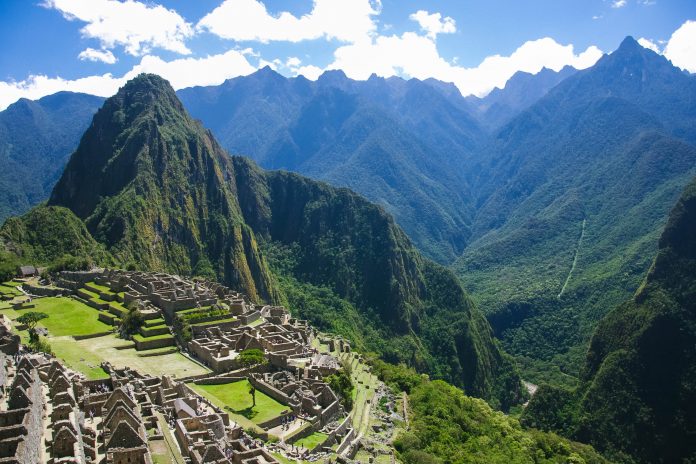Machu Picchu ist wohl die berühmteste Inka-Ruinenstadt Perus. Die „Stadt in den Wolken“ liegt vor der atemberaubenden Kulisse der Anden auf über 2.300 Metern Höhe und fügt sich perfekt in den Berggipfel ein.
Machu Picchu, die wohl berühmteste Inka-Ruinenstadt in den Anden Perus, liegt etwa 75km nordwestlich der einstigen Inka-Hauptstadt Cusco. Ihr Name bedeutet aus dem Quechua übersetzt „Alter Vogel“, sie wird aber auch äußerst treffend als „Stadt in den Wolken“ bezeichnet.
Die Inka-Siedlung wurde 1450 vor der atemberaubenden Kulisse der Anden auf 2.360 Metern Höhe errichtet. Sie liegt malerisch auf ihrem Berggipfel und versetzt jeden Besucher mit ihrer ausgeklügelten Bauweise in Staunen.
Inhaltsverzeichnis
Machu Picchu als Weltwunder
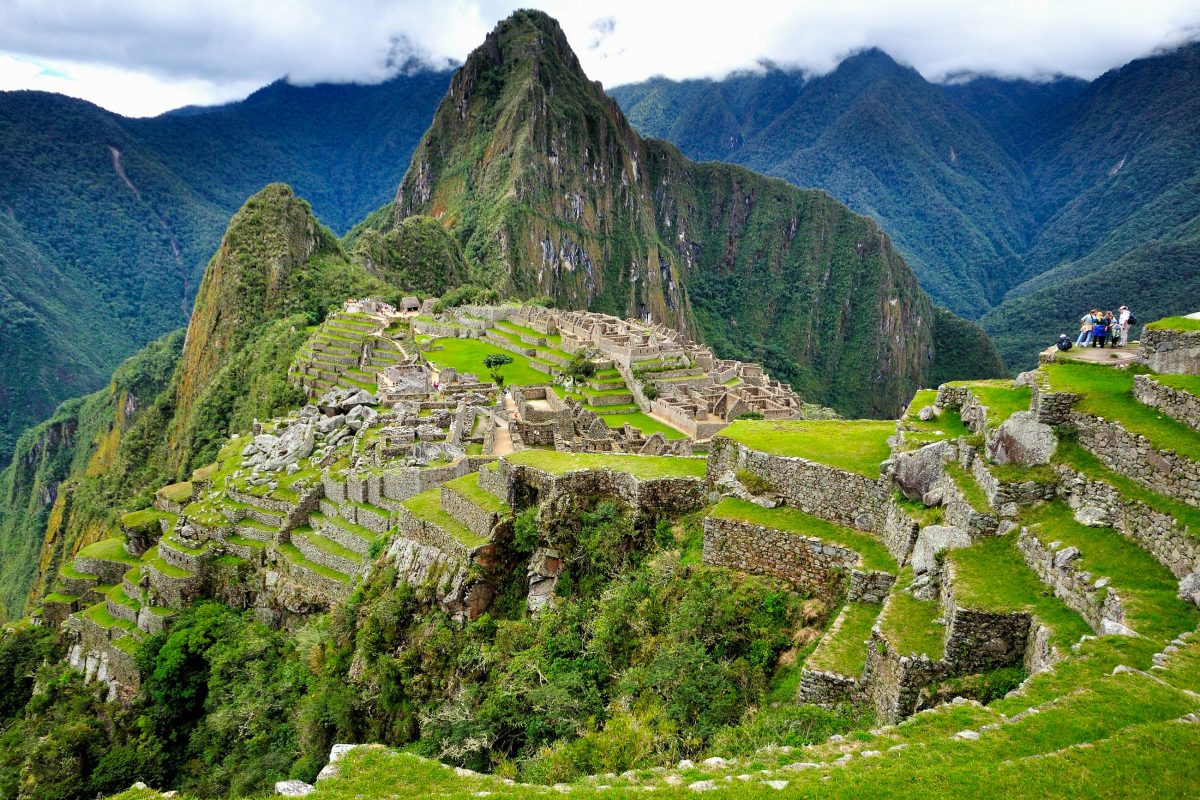
Seit dem Jahr 1983 ist Machu Picchu auf der Weltkulturerbeliste der UNESCO zu finden. Auch im Zuge der inoffiziellen weltweiten Wahl der „Neuen 7 Weltwunder“ im Jahr 2007 konnte Machu Picchu diesen Titel für sich beanspruchen. Wir haben Machu Picchu selbstverständlich auf unsere Liste der Top 10 Sehenswürdigkeiten von Peru aufgenommen.
Warum ist Machu Picchu so besonders?

Die Wiederentdeckung von Machu Picchu erfolgte offiziell im Jahr 1911. Der amerikanische Forscher Hiram Bingham entdeckte die Ruinenstadt auf seiner Suche nach Vilcabamba, der letzten Zufluchtsstätte der Inkas vor den spanischen Invasoren.
Nur 20km vom tatsächlichen Vilcabamba entfernt legte er die beeindruckenden Siedlungsüberreste frei und machte seinen Fund weltweit bekannt. Böse Zungen behaupten, dass er zuvor die Schätze von Machu Picchu still und heimlich in die Vereinigten Staaten bringen ließ.
Errichtet von einem mächtigen Inka-König
Den Auftrag für die Errichtung von Machu Picchu gab der Inka-Herrscher Pachacútec Yupanqui, der die Basis für den mächtigen Aufstieg des Inka-Reiches legte und auch den Kult um den Sonnengott Inti einführte. Über die genaue Intention der Stadt lassen sich aufgrund der fehlenden Aufzeichnungen nur Vermutungen anstellen.
Nahtlos an den Berg geschmiegt
Aufgrund des steilen Geländes, welches Berggipfel so an sich haben, waren die insgesamt 216 Steingebäude an die topografischen Gegebenheiten perfekt angepasst. Sie wurden auf Terrassen angelegt und durch ein Treppenlabyrinth aus etwa 3.000 Stufen untereinander verbunden.
Perfektes Wasserleitsystem
Die Wasserversorgung der bis zu 1.000 Einwohner erfolgte über ein ausgeklügeltes kaskadenförmiges Brunnen- und Kanalsystem, welches auch für die geregelte Ableitung des Regenwassers zuständig war.
Original-Inka-Mauern wie vor 550 Jahren
Machu Picchu wurde von den spanischen Eroberern nie erreicht und deshalb auch nicht zerstört. Sowohl die Gebäude als auch die Straßen wurden in den letzten Jahren restauriert und können im Originalzustand von damals besichtigt werden.
Die berühmte Bauweise der erdbebensicheren Inka-Mauern mit perfekt ineinander gefügten Steinen ohne Mörtel ist hier besonders eindrucksvoll zur Schau gestellt.
Wie kommt man am besten nach Machu Picchu?

Heute ist Machu Picchu unter den Sehenswürdigkeiten Perus derart beliebt, dass die UNESCO die Anzahl der Besucher mittlerweile auf 800 pro Tag beschränkt hat, um das Welterbe nicht zu gefährden. Tickets für den Besuch von Machu Picchu müssen auf der Regierungsseite im Voraus gebucht werden.
Am leichtesten ist die Stadt in den Wolken von Aquas Calientes aus zu erreichen, einem Dorf am Fuß des Machu Picchu, das mit dem Zug zu erreichen ist. Von dort aus geht es mit dem Bus oder zu Fuß gut 8 Kilometer über enge Serpentinen bis zum atemberaubenden Gipfel.
Wandern auf dem Inka-Trail
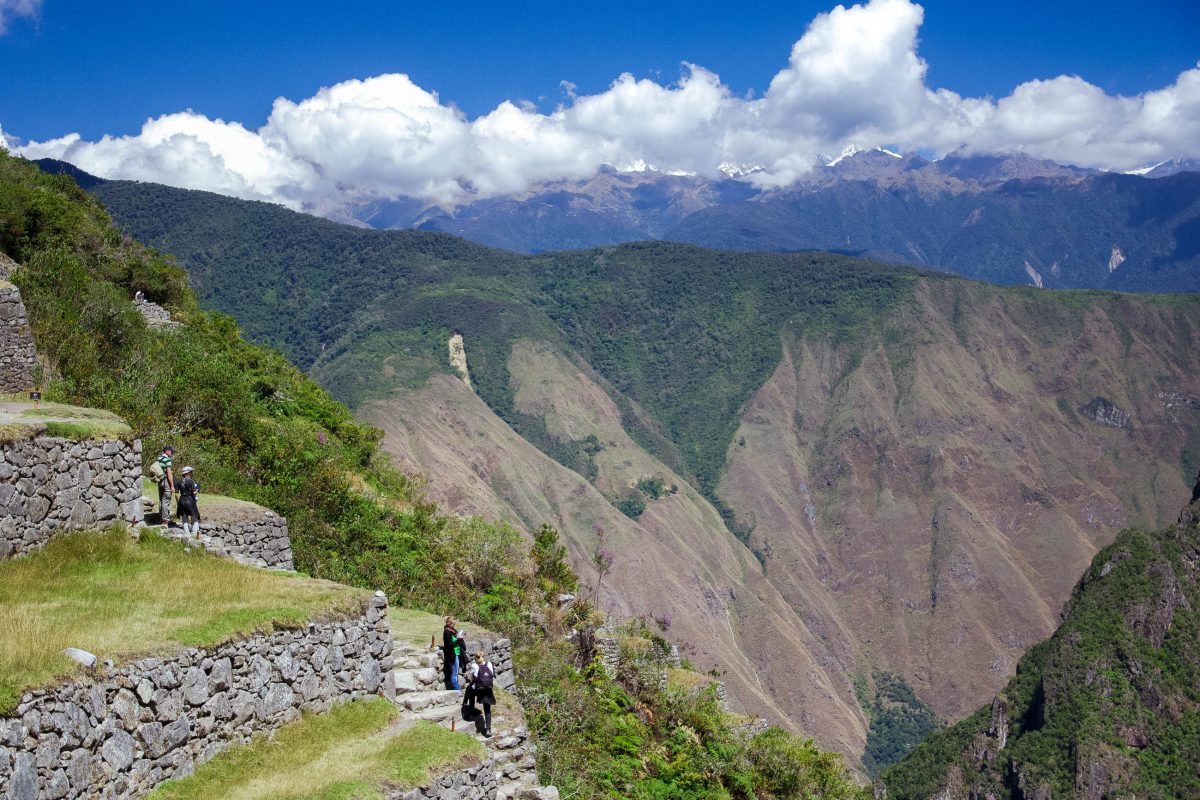
Die berühmte Gipfelstadt erreicht man auch über einen steilen Bergweg über die Anlage auf dem Gipfel Huayna Picchu (Junger Gipfel). Die um einiges spektakulärere und traditionellere Alternative ist ein uralter und vergleichsweise breiter Inka-Pfad. Dieser führt von der Königsstadt Cusco über Llactapata bis nach Machu Picchu.
Über die traditionellen Inka-Pfade nimmt die Wanderung nach Machu Picchu mehrere Tage in Anspruch, das Panorama auf dieser Reise ist jedoch absolut überwältigend! Von dieser Seite aus wird Machu Picchu durch das berühmte Sonnentor erreicht.
Sehenswürdigkeiten von Machu Picchu
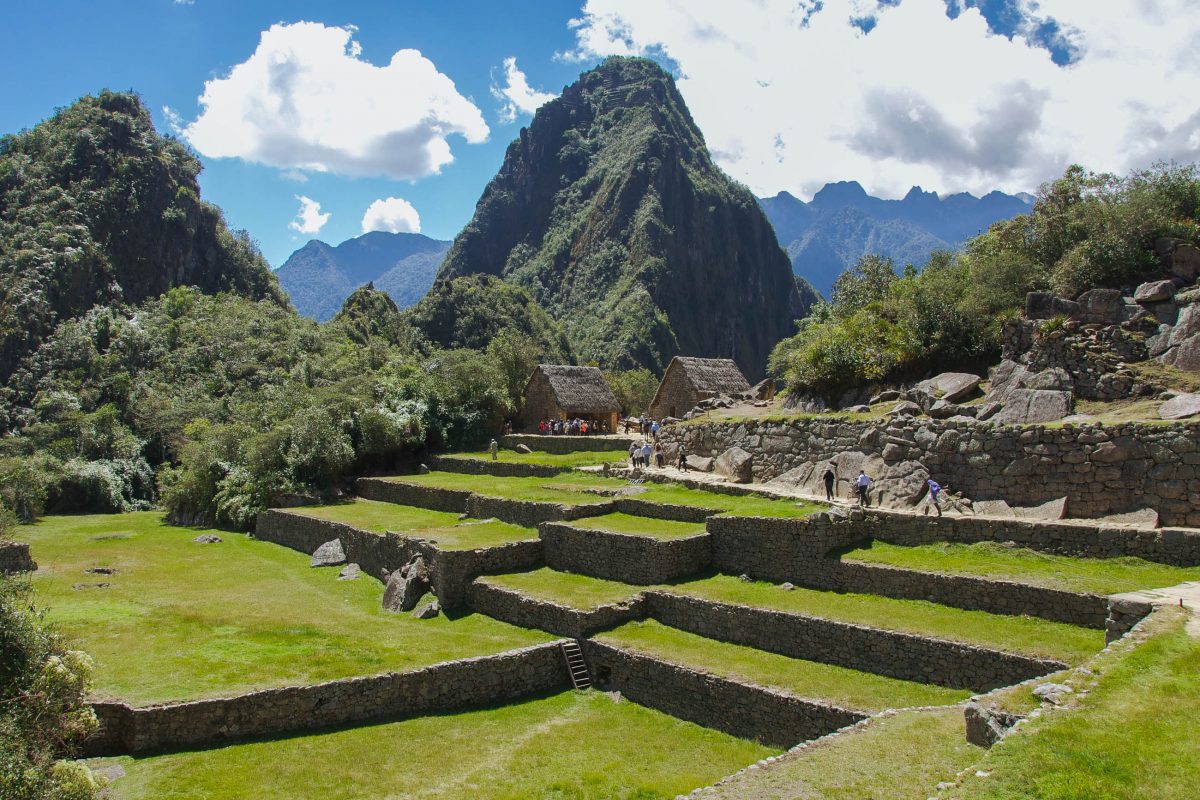
Die Anlage an sich mit den meisterhaft gefertigten Mauern, die überwältigende Aussicht auf die umliegenden Berggipfel und die unvergessliche Atmosphäre dieser magischen Stadt ziehen jeden Besucher in ihren Bann.
Sonnentor und Sonnentempel
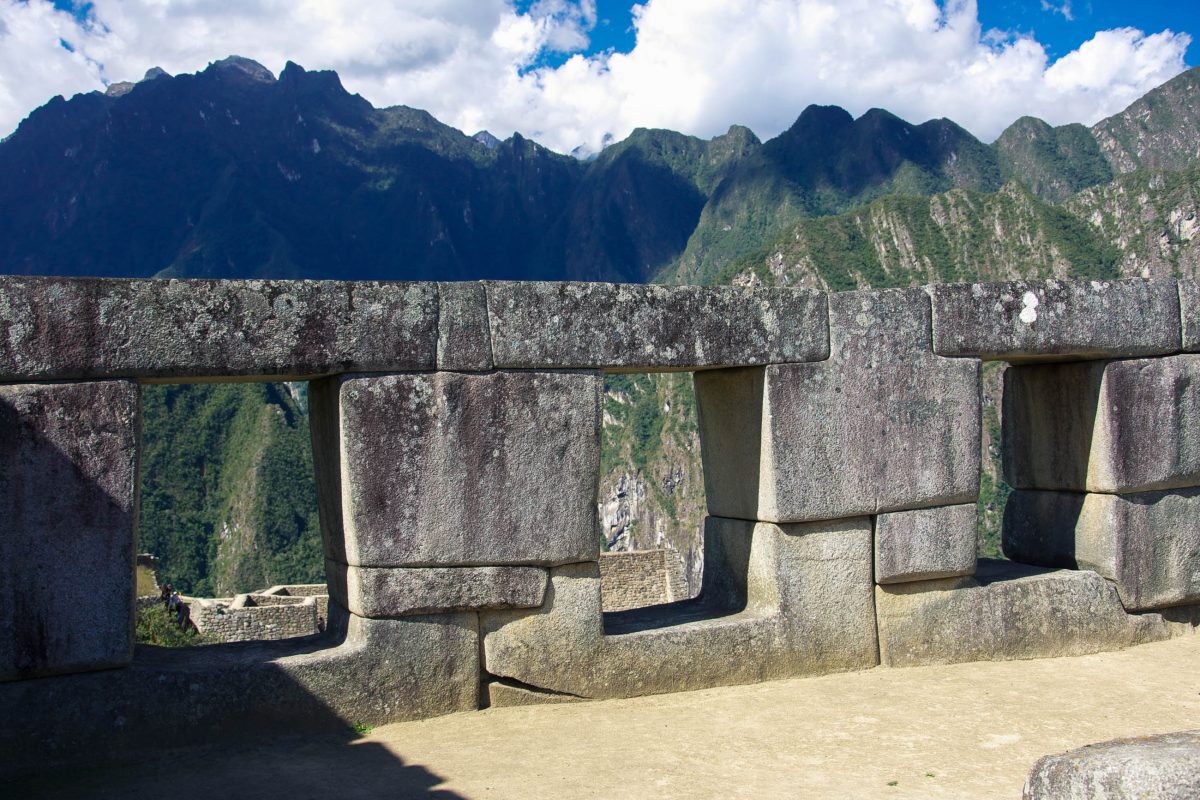
Zu den Highlights von Machu Picchu gehört neben dem Sonnentor auch der Sonnentempel. Die Boden-Skulptur in seinem Inneren diente vermutlich als Wasserspiegel zur Beobachtung des Himmels.
Er ist außerdem das wohl faszinierendste Beispiel für die Inka-typische mörtellose Steinbauweise. Diese ist übrigens auch in einigen weniger bekannten aber ebenso faszinierenden Inka-Sätten zu bewundern. Sacsayhuamán und Ollantaytambo liegen direkt auf dem Weg von Cusco nach Machu Picchu.
Intihuatana

Der Intihuatana (wörtlich: Ort, an dem man die Sonne fesselt) liegt am höchsten Punkt von Machu Picchu und ist ebenfalls besonders bemerkenswert. Der kunstvoll behauene Stein bringt faszinierende Schattenspiele hervor und diente wohl als Sonnenuhr. Aufgrund seiner besonderen Neigung wirft der Intihuatana exakt an den Tagen der beiden Sonnenwenden keinen Schatten.
Blick auf Machu Picchu vom Nachbargipfel
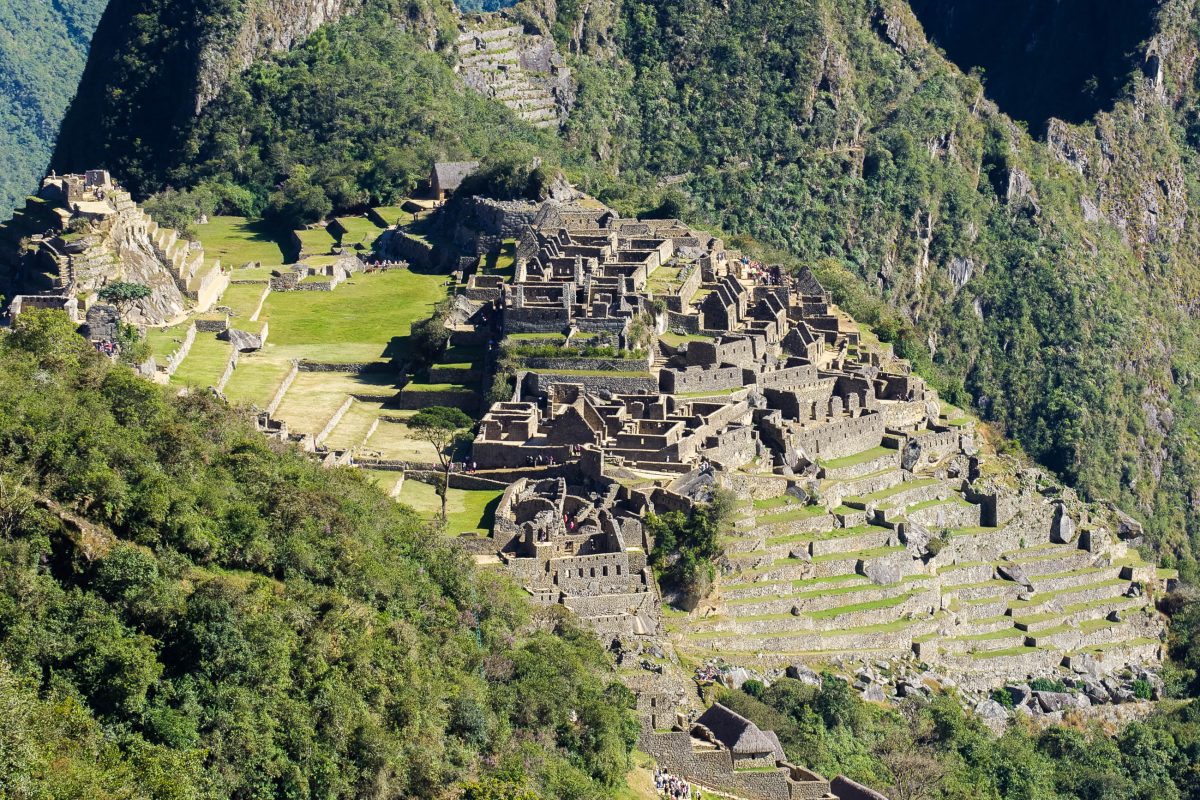
Wer nach dem steilen Anstieg noch Kraft in den Beinen hat, sollte sich die spektakuläre Wanderung zum schwindelerregenden Nachbarberg Wayna Picchu nicht entgehen lassen, der fantastische Ausblicke auf den Komplex von Machu Picchu bietet.
Weiter ginge es dann noch auf abenteuerlichen Pfaden zum Mondtempel und der Großen Höhle. Viele Wanderer beurteilen die Aussicht als weniger spektakulär, in den abgeschiedenen Waldstücken können jedoch viele Wildtiere wie aus dem Nichts auftauchen, sogar die seltenen Brillenbären sind schon gesichtet worden.
Beste Reisezeit für Machu Picchu
Als beste Reisezeit für Machu Picchu gelten die Monate Juni, Juli und August. Im europäischen Sommer gibt es in Peru am ehesten trockenes und halbwegs warmes Wetter. Da Machu Picchu auf über 2.000 Metern Seehöhe liegt, überschreiten die Temperaturen allerdings selten die 20°C-Marke.
Tipp: Wer Machu Picchu im Mai oder September besucht, hat vermutlich ebenfalls Glück mit dem Wetter und genießt die Wolkenstadt noch außerhalb der Hochsaison ohne großen Touristenansturm.
Klimatabelle für Machu Picchu


